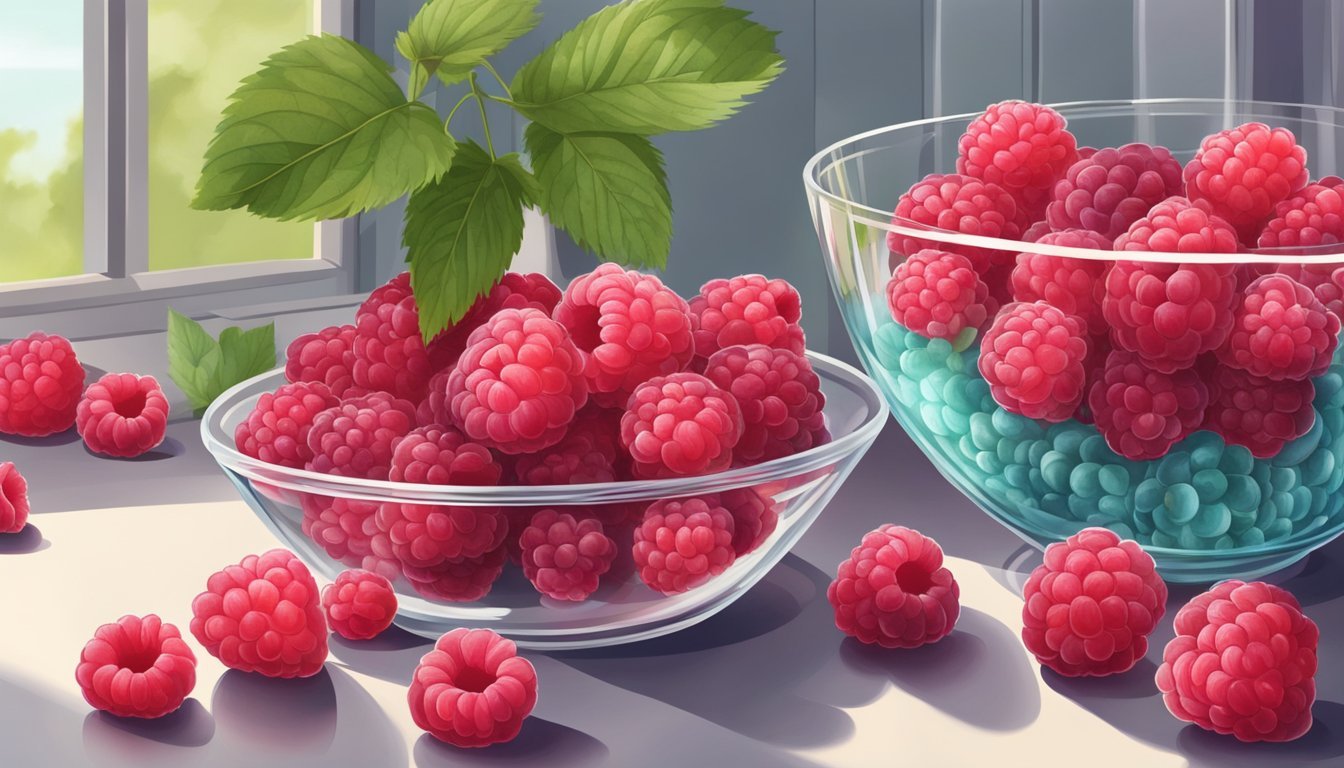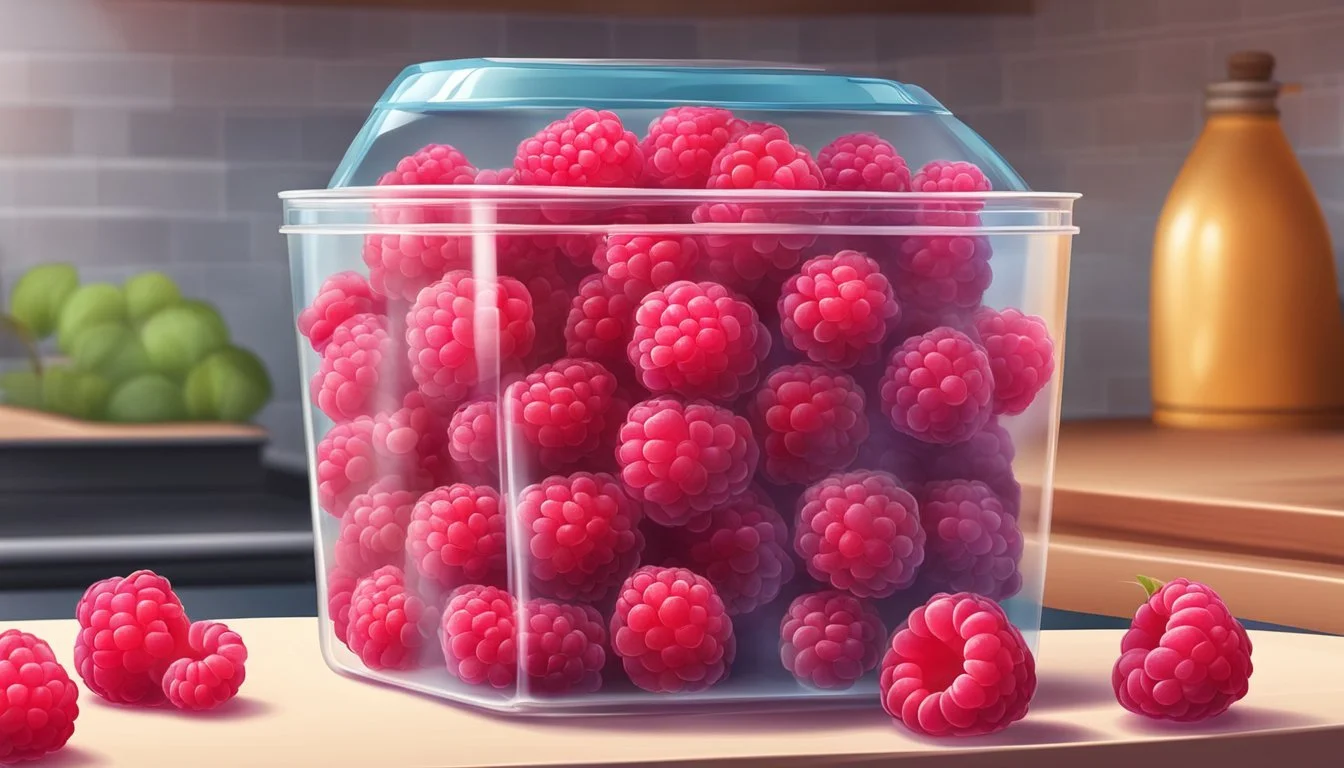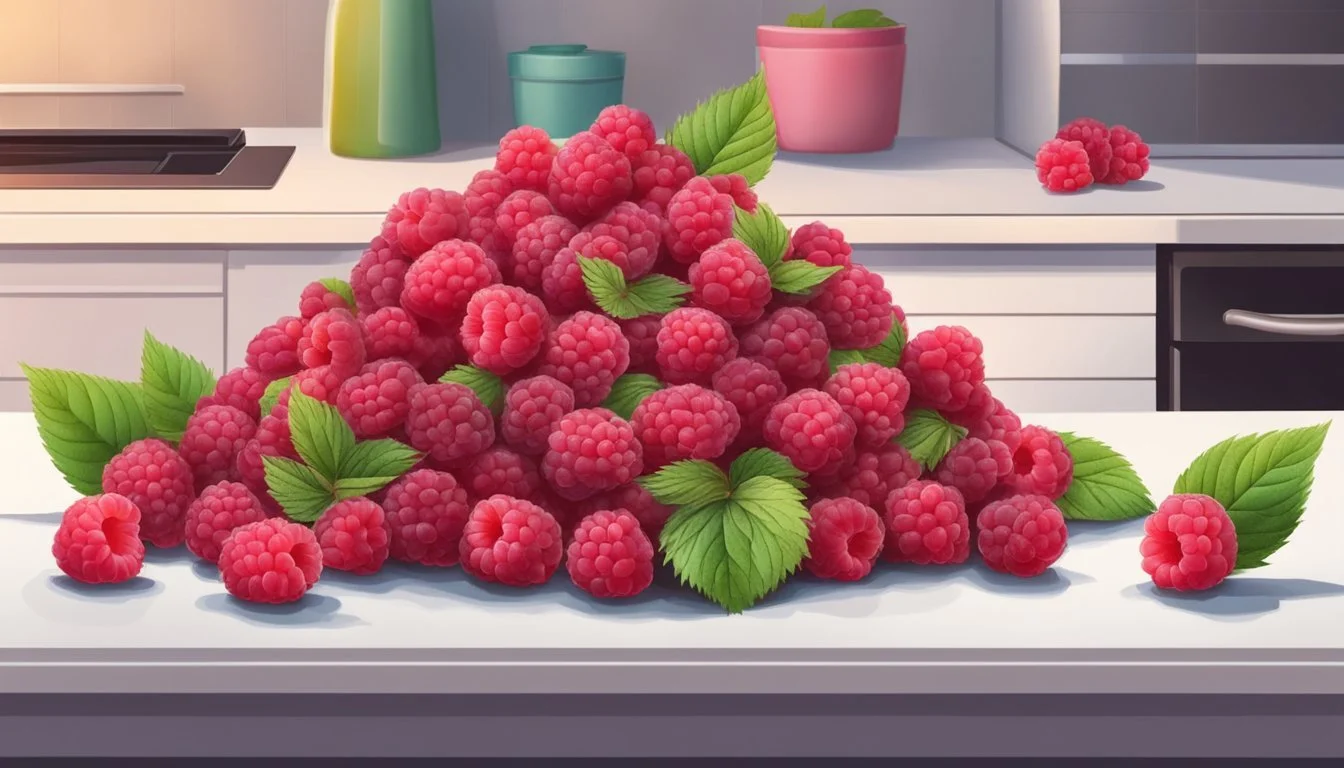How Long Do Raspberries Last?
Shelf Life and Storage Tips
Raspberries, with their rich color and juicy taste, are a popular fruit enjoyed by many. However, their shelf life is relatively short, which can be a concern for consumers who wish to savor them over a longer period. When stored properly in the refrigerator, raspberries will generally stay fresh and retain their quality for 1-2 days. While this might appear to be a narrow window for consumption, there are methods that can extend their shelf life under the right conditions.
For those looking to keep raspberries longer than a couple of days, freezing emerges as a viable preservation method. When raspberries are frozen, their shelf life can be extended significantly, often allowing them to be used for several months. On the other hand, when raspberries are dehydrated with precision, they can last for up to a year, making dehydration another option for long term storage. It is crucial for those handling raspberries to look for signs of spoilage such as mold, mushiness, or discoloration before consumption, and to refrigerate them in moisture-free containers to prevent premature spoilage.
Understanding the factors that contribute to the deterioration of raspberries, such as exposure to moisture, is key to maintaining their freshness. Consumers are advised not to wash the berries until they are ready to consume them to help minimize the risk of mold formation and to keep them dry in storage. By employing these preservation techniques, raspberry enthusiasts can extend the enjoyment of their favorite fruit beyond its typical fresh lifespan.
Identification of Quality
When selecting raspberries, one must assess their freshness and spot any indications of spoilage to ensure the berries are at their peak quality for consumption.
Characteristics of Fresh Raspberries
Fresh raspberries are known for their brightly colored hue, typically ranging from a deep red to a pinkish shade. They should be plump and firm, signaling their ripeness and readiness to be eaten. The surface of fresh berries must not show any signs of bruising or discoloration, which can indicate damage or the beginning stages of decay. The appearance plays a key role in determining quality, and fresh raspberries will have a uniform color with a natural sheen.
Color: Deep red to pink, uniform, brightly colored
Texture: Plump and firm, not mushy or hard
Integrity: No bruises or discoloration
Signs of Spoilage
Raspberries that have gone bad are often easy to identify. Any mold presence—typically white, green, or blue patches—is a definitive sign that the raspberries should not be consumed. The texture of spoiled raspberries might be mushy or slimy, a far cry from the firmness of their fresh counterparts. It's also common for bad raspberries to emit an off or fermented smell, which is distinctly different from the sweet, fruity aroma of fresh raspberries. Lastly, a noticeable discoloration or dullness can imply that the red raspberries are no longer fit for consumption.
Mold: Look for fuzzy spots of any color.
Texture: Slimy or excessively mushy berries indicate spoilage.
Smell: An unusual or fermented odor.
Appearance: Dullness or uneven coloration suggests decay.
Storage Fundamentals
Proper storage is critical to maximizing the shelf life of raspberries. They are highly perishable and require particular conditions to remain fresh.
At Room Temperature
Raspberries should only be kept at room temperature if they will be consumed within a day, as they are quick to spoil. Storage at room temperature is not recommended for any extended period due to their delicate nature and propensity to mold.
In the Refrigerator
To maintain freshness, raspberries are best stored in the refrigerator. They should be kept in their original plastic clamshell container, which is designed to facilitate air circulation, or in a shallow container if purchased loose. They can last between 2 to 5 days when refrigerated properly at a consistent temperature of 32°F to 34°F.
Freezing Raspberries
For long-term storage, raspberries can be frozen. First, they should be gently washed and thoroughly dried. They can then be arranged in a single layer on a baking sheet to freeze initially, to prevent clumping, and subsequently transferred to airtight containers or freezer-safe bags. Freezing raspberries can extend their shelf life up to one year, with best quality retained if used within six months.
Handling Procedures
Proper handling of raspberries is crucial to maximize their shelf life and reduce spoilage. Attention to washing and preparation can prevent mold growth, while proper storage methods effectively extend longevity.
Washing and Preparing
Prior to storing, raspberries should be washed gently to remove any debris or contaminants. However, since moisture can hasten spoilage, it is imperative to wash them only right before consumption. To clean raspberries, one can place them in a colander and rinse with cool water, then allow them to air dry completely or gently pat them dry with a paper towel.
Extending Shelf Life
To extend the shelf life of raspberries:
Refrigeration: Store them in their original container or a covered shallow container lined with paper towels to absorb excess moisture. Raspberries can be kept in the refrigerator for 2 to 3 days.
Freezing: For longer storage, freezing raspberries is optimal. First, spread them out on a baking sheet in a single layer to prevent clumping. Freeze until solid, then transfer them into airtight containers or freezer bags. This flash-freezing method prevents freeze damage and keeps the raspberries usable for up to a year.
Dehydrating: Dehydrate raspberries by spreading them on a dehydrator tray and following the manufacturer's instructions. Dehydrating reduces moisture content, preventing mold and extending shelf life considerably when stored in a cool, dry place.
Usage Tips
Maximizing the freshness and flavor of raspberries involves knowing the ideal culinary applications and understanding the best times for purchasing or picking.
Culinary Applications
Raspberries are a versatile fruit that can be used to enhance the flavor and texture of various dishes. They can be incorporated into desserts, such as tarts and pastries, where their vibrant color and sweet-tart flavor can elevate the dish. For a quick and healthy option, one can sprinkle raspberries on top of cereal or granola and combine them with yogurt to create a nutritious and delicious breakfast or snack. Raspberries also blend perfectly into smoothies, providing a rich, fruity taste along with a smooth texture.
When to Buy and Pick
Purchasing raspberries at a grocery store should be done with care. Buyers should look for berries that are plump, free from dents and blemishes, and have a bright color. Avoid packages that show any signs of mold or excessive moisture, as these conditions accelerate spoilage. For those who prefer to pick raspberries themselves, the ideal time is when the berries are fully ripe; they should detach easily from their stems and have a soft but not mushy feel. Freshly picked raspberries should also be stored carefully, ideally in their picking containers which are designed to protect the delicate fruit during transport.
Recognizing Potential Issues
To ensure the consumption of high-quality raspberries, one must be vigilant in identifying signs that indicate spoilage or inferior quality.
Telltale Signs of Deterioration
Mold: Mold is a definitive sign of spoilage. Raspberries with visible mold, which appears as fuzzy spots, should not be consumed.
Discoloration: Fresh raspberries have a vibrant red hue; if they appear discolored or develop dark spots, their quality has likely diminished.
Odor: A fresh raspberry will have a subtly sweet scent. An off smell or a sour, unpleasant odor is a clear indicator that the raspberries are no longer good to eat.
Texture: The ideal raspberry texture is plump and firm. Raspberries that feel mushy to the touch are past their prime and should be discarded.
Ensuring raspberries are free from mold and maintaining their color, smell, and texture is key to preserving their quality and determining when they have spoiled.





